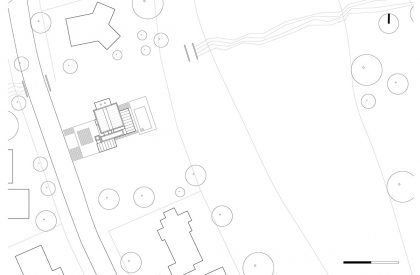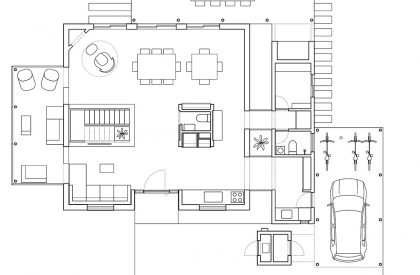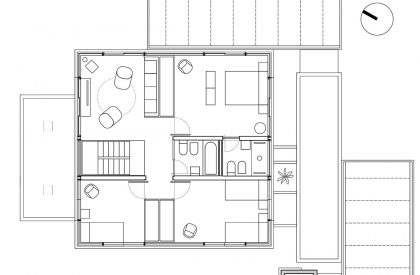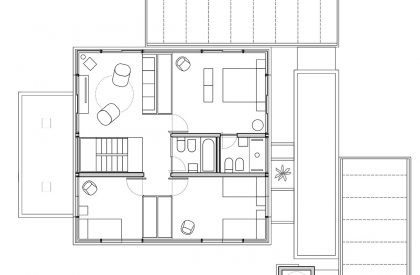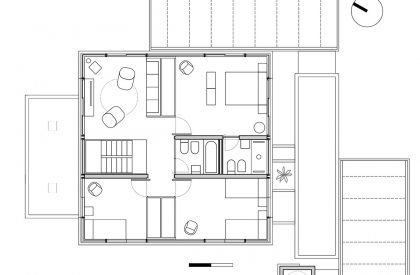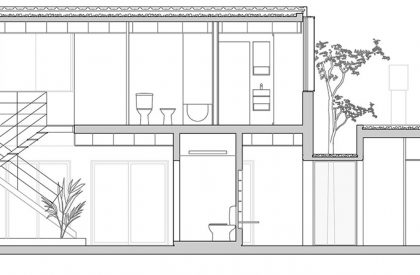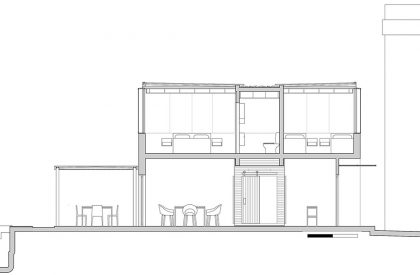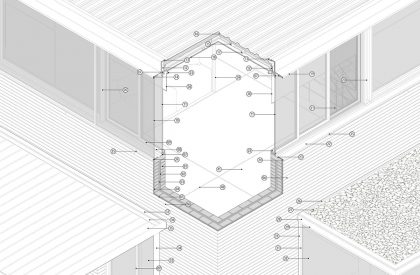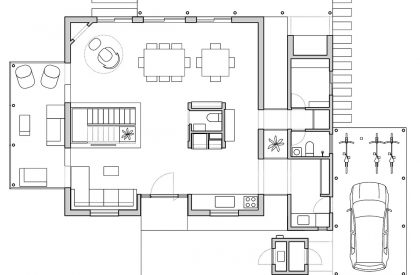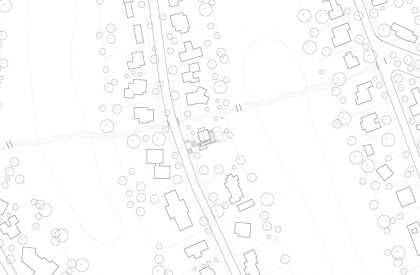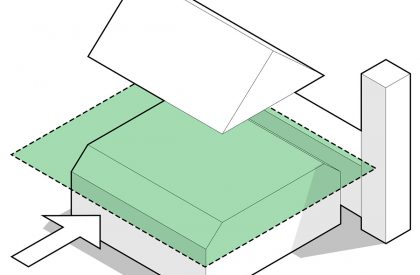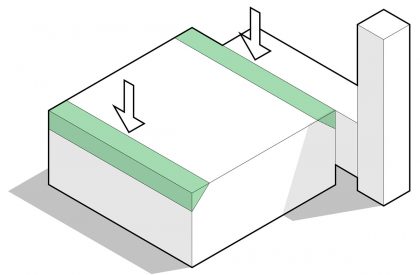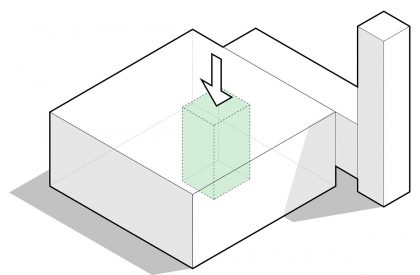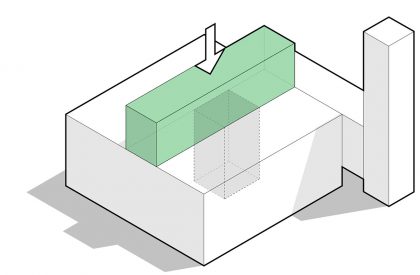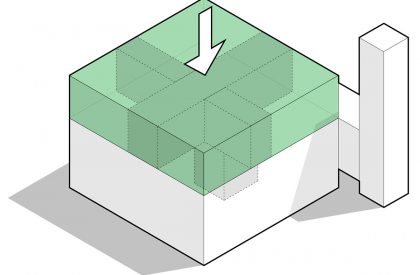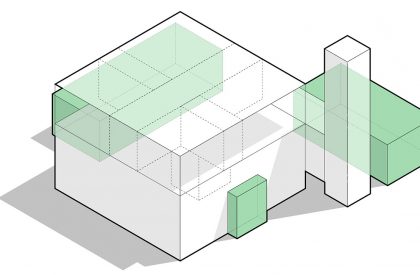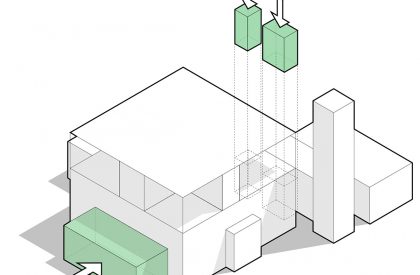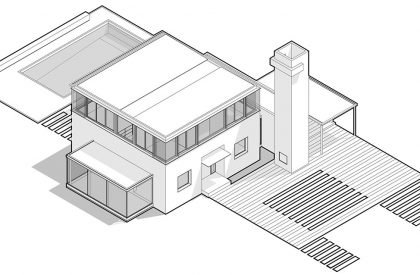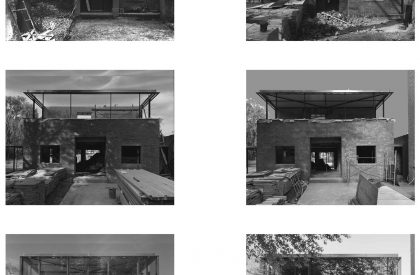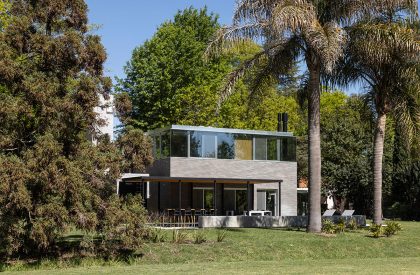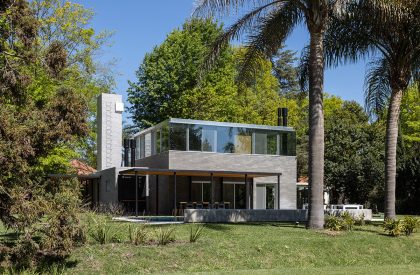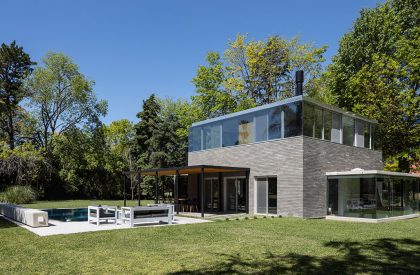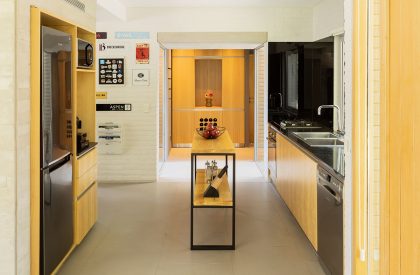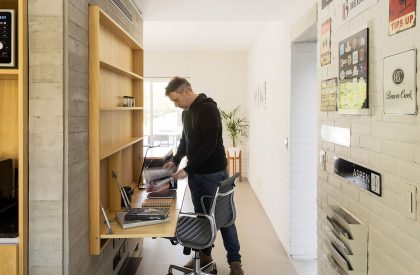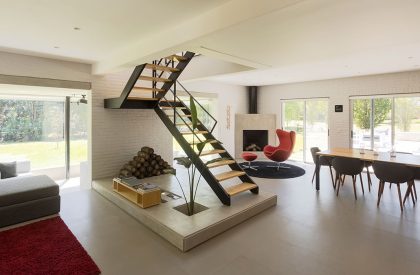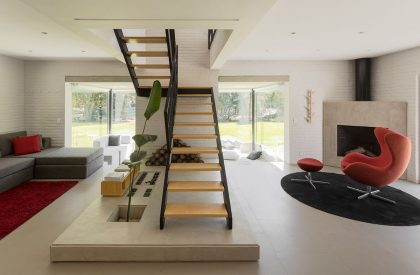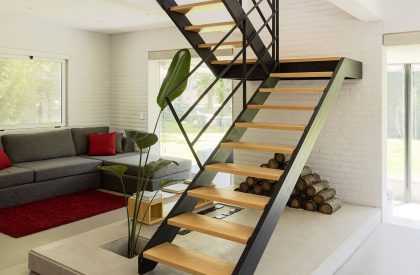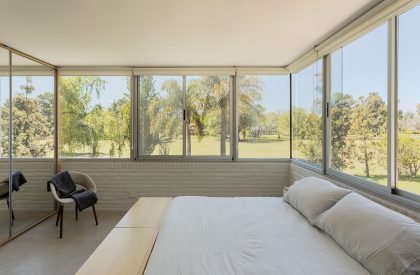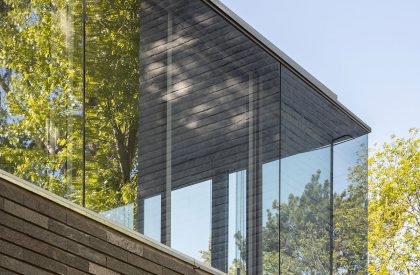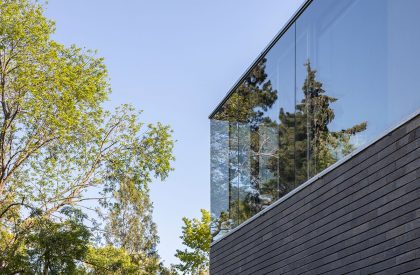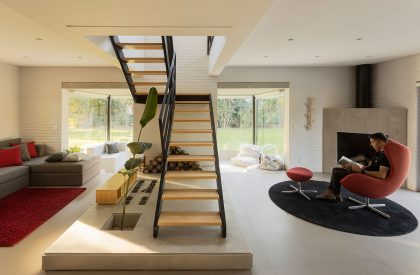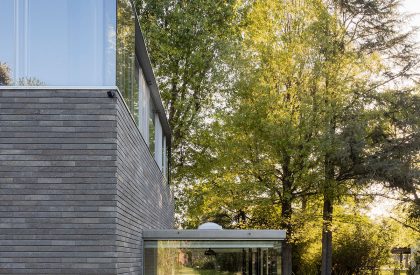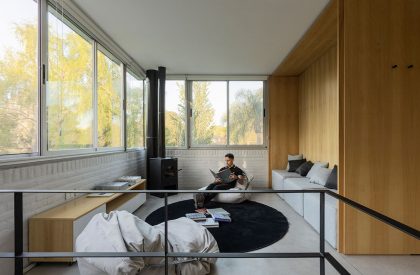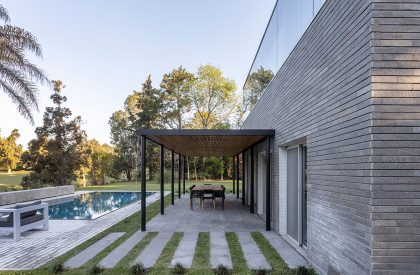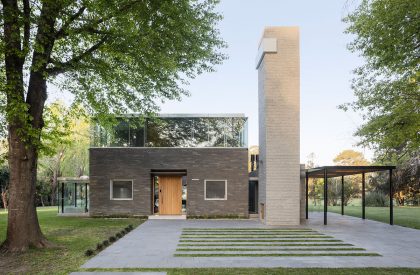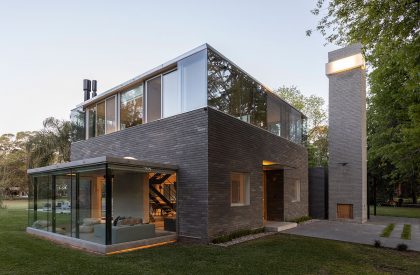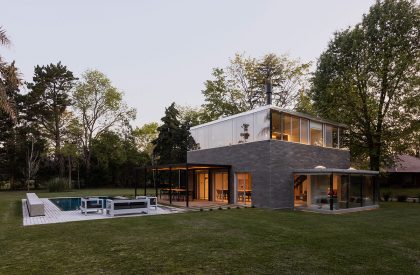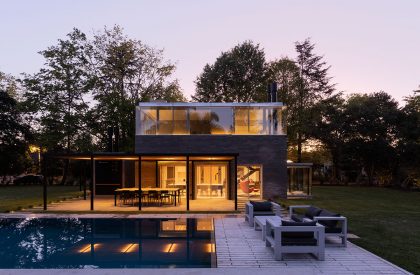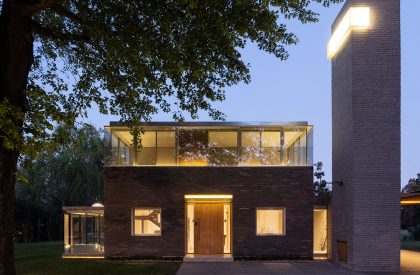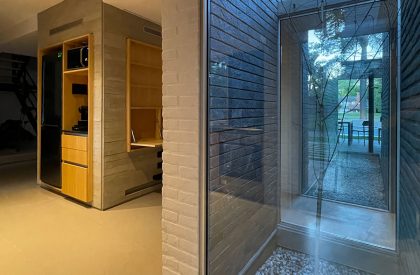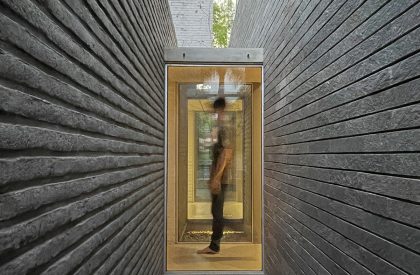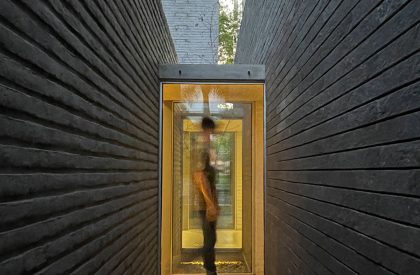Excerpt: Cabin 192 by Daniel Canda & Asociados is a residential project in a low-density suburban area, featuring uniform architecture and lush vegetation. Readapting to the existing construction, a wall box was defined as a container for the space, and all the interior walls of the ground floor were replaced by a single central support materialised in a concrete volume. This freed up the floor plan and allowed a spatial flow that was the premise of the project.
Project Description
[Text as submitted by architect] The project is developed in a very low-density suburban environment, with uniform architecture and lush vegetation as a distinctive feature.


Do or Redo: Time inevitably produces changes in society, and the housing environment must be readjusted. Fifty years later, a house no longer meets the demand for which it was created. If we are in a consolidated urban environment, the answer is simpler, but if we must choose between transforming an existing suburban house or building a new one, there is an ethical question that surpasses the merely economic equation. As architects we must rethink the impact that generates replacing a piece where it can be refunctionalized. And that decision comes prior to the project.



The search: Having then made the decision to readapt an existing construction, the search was oriented towards a structure that was as basic as possible, which would allow a certain freedom for a programmatic readjustment. In that sense, the discovery of a home designed by architect Horacio Iovine in the early 1980s was the most convenient option. A pure volume with a gable roof, with a 9 x 9 square geometric plan materialized by a wall box, and two adjacent service bodies as independent volumes.



Existing Building: Although the wall box allowed the envelope to be preserved, the interior compartmentalization represented an obstacle in the search for a more contemporary space. Even so, the layout of the service strip was interesting, slightly displaced from the axis of the plant, which left rooms of different dimensions on both sides of the core. In terms of volume, the surface area of the upper floor was reduced by half due to the eaves of the gable roof, housing only two bedrooms and a bathroom.



The project: Having defined that the wall box was going to remain as a container for the space, all the interior walls of the ground floor were replaced by a single central support materialized in a concrete volume. This freed up the floor plan and allowed a spatial flow that was a premise of the project.


Similarly, and in order to increase the surface area on the upper floor, the gable roof was replaced by a flat roof supported by a light metal structure, which, like a cage, contains the carpentry. This allowed two bedrooms and an additional bathroom to be configured, required by the needs program.


Layout: The interior was organized on open and flexible floor plans. In the lower one, the concrete core that houses a toilet, organizes four subspaces around it: kitchen, dining room, fireplace and living room. On the upper floor, the central structural corridor contains the staircase and bathrooms, while, on both sides, the rooms are delimited by floor-to-ceiling furniture.



Just as the position of the central corridor in the original structure was displaced from the axis to form two unequal halves, the new divisions repeat the offset, but on the perpendicular axis. In this way, 4 subspaces of different dimensions are formed. The use of these mobile divisions allows the layout of the four rooms to be quickly changed and adapted to new requirements.



Materiality: Once the elements of the composition were defined, the materiality accompanied the differentiation and hierarchy between them. In the main volume, a stone covering with a horizontal joint was used that takes up the dimensions of the exposed brick, and provides a texture of lights and shadows of a similar scale. Above this plinth rises a glass box that reflects the surrounding vegetation and is diluted against the sky. At night the interior is illuminated, accentuating this contrast and expressing the lightness of the upper structure.


In the support volumes – the horizontal one for the service and the vertical one for the water tank – both in exposed brick, the vertical joints were taken to accentuate the horizontal lines. A gray palette was also used to chromatically unify the set.


Language: The interior spaces were sought to be fluid, simple and stripped down, with noble materials such as wood, concrete and cement floors. Trying to keep a simple home, with a certain degree of austerity and in broad contact with nature. The Anglo-Saxon word Cabin1 perfectly fits that definition, so it was named Cabin 192 (plot number).

Landscape and Technology: The environment of ancient trees and distant neighbors inspired the concept of a suspended glass box that generates a play of reflections. At the same time, there was a search for -from the interior- an absolute transparency combined with the arrangement of reflective surfaces, to transmit the idea of the exterior penetrating the interior.



From a constructive point of view, to achieve a thermal efficiency equivalent to the masonry envelope of the lower floor, a double skin was materialized with a ventilated interior air chamber that preserves the thickness of the 30 cm wall box. The exterior side is tempered glass with solar treatment and the inner ones in hermetic double glazing. So, the set achieves adequate thermal and solar protection while maintaining the idea of transparency and extended visuals.

